Text

0 notes
Text

0 notes
Text
Connectivity Redefined: Harnessing the Synergy of Mobile Satellite Services, Terrestrial Networks, Satellite Technology, and the Internet of Things
Introduction:
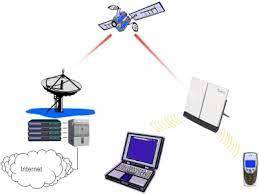
In an increasingly interconnected world, the convergence of Mobile Satellite Services (MSS), terrestrial networks, satellite technology, and the Internet of Things (IoT) is reshaping the way we perceive and experience connectivity. This fusion of technologies holds the promise of ubiquitous communication, enabling seamless data exchange and fostering innovation across diverse sectors. In this exploration, we delve into the synergies among these components and explore their collective impact on our digital ecosystem.
Mobile Satellite Services (MSS):
Mobile Satellite Services (MSS) have emerged as a lifeline for communication in remote and underserved regions, where traditional terrestrial networks struggle to provide coverage. By leveraging a constellation of orbiting satellites, MSS enables voice, data, and multimedia communication services to users, irrespective of their geographical location. This capability is invaluable during natural disasters, humanitarian crises, and maritime or aviation operations, where reliable communication is paramount for safety and coordination.
Moreover, MSS plays a pivotal role in extending connectivity to areas lacking adequate terrestrial infrastructure, such as rural communities and remote industrial sites. The evolution of MSS technology, including the deployment of high-throughput satellites and the integration of hybrid networks, further enhances its capacity and reliability, paving the way for innovative applications in sectors ranging from emergency response to global logistics.
Terrestrial Networks:
While MSS excels in providing coverage beyond terrestrial boundaries, terrestrial networks remain the backbone of everyday communication infrastructure. From fiber-optic cables to cellular towers, terrestrial networks facilitate high-speed data transmission and support a myriad of services, including voice calls, internet access, and multimedia streaming.
The advent of 5G technology represents a quantum leap in terrestrial networking, offering unparalleled bandwidth, ultra-low latency, and massive device connectivity. 5G's capabilities extend far beyond consumer communications, fueling advancements in augmented reality, autonomous vehicles, and smart cities. However, the deployment of 5G infrastructure poses challenges such as spectrum allocation, infrastructure deployment costs, and regulatory considerations.
The convergence of MSS with terrestrial networks presents a compelling solution to address these challenges and unlock new possibilities. Hybrid networks seamlessly integrate satellite and terrestrial communication, ensuring continuous connectivity across diverse environments. This convergence is particularly significant in bridging the digital divide, extending connectivity to remote areas, and enabling inclusive access to communication services worldwide.
Satellite Technology:
Satellite technology serves as the backbone of MSS, providing the infrastructure for global connectivity. Over the years, advancements in satellite design, propulsion systems, and launch technologies have transformed the capabilities and economics of satellite-based communication systems.
Traditional geostationary satellites offer wide coverage but suffer from latency issues due to their high-altitude orbits. In contrast, Low Earth Orbit (LEO) and Medium Earth Orbit (MEO) constellations have emerged as game-changers, offering lower latency and increased capacity.
Companies like SpaceX, OneWeb, and Amazon are spearheading the deployment of LEO mega-constellations, promising global broadband coverage with unprecedented speeds. These constellations not only cater to consumer internet needs but also unlock new opportunities for IoT applications, enabling seamless connectivity for billions of devices worldwide.
Internet of Things (IoT):
The Internet of Things (IoT) represents the interconnected network of devices, sensors, and systems, enabling data exchange and automation across various domains. IoT applications span diverse industries, from smart homes and cities to industrial automation and healthcare, driving efficiency, productivity, and innovation.
The integration of IoT with satellite and terrestrial networks amplifies the potential of connected devices, enabling real-time monitoring, data analytics, and remote control functionalities. In agriculture, IoT sensors combined with satellite imagery optimize crop management practices, minimize resource wastage, and maximize yields.

In smart cities, IoT-enabled infrastructure enhances urban services, improves resource allocation, and enhances quality of life for residents. Furthermore, in healthcare, IoT devices enable remote patient monitoring, telemedicine consultations, and personalized treatment plans, extending healthcare access and improving patient outcomes.
The convergence of Mobile Satellite Services (MSS), terrestrial networks, satellite technology, and the Internet of Things (IoT) represents a paradigm shift in connectivity, empowering individuals, businesses, and communities worldwide. By harnessing the synergies among these technologies, we can overcome geographical barriers, bridge the digital divide, and unlock new frontiers of innovation and prosperity. As we navigate the complexities of an increasingly connected world, collaboration, innovation, and inclusivity will remain critical in shaping a future where connectivity knows no bounds.
0 notes
Text
Revolutionizing Connectivity: The Convergence of Mobile Satellite Services, Terrestrial Networks, Satellite Technology, and the Internet of Things
Introduction:
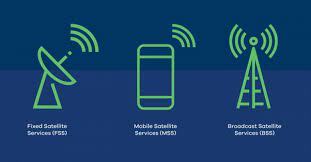
In today's interconnected world, seamless communication is no longer a luxury but a necessity. The convergence of Mobile Satellite Services (MSS), terrestrial networks, satellite technology, and the Internet of Things (IoT) is transforming how we perceive connectivity. This synergy is not just about enabling communication; it's about unlocking possibilities across industries, from improving disaster response to enhancing rural healthcare and revolutionizing transportation systems. In this comprehensive exploration, we delve into the intricacies of each component and examine how their integration is reshaping our digital landscape.
Mobile Satellite Services (MSS):
Mobile Satellite Services (MSS) have revolutionized global communication by extending coverage to remote and underserved areas where traditional terrestrial networks struggle to reach. MSS providers utilize a constellation of satellites orbiting the Earth to deliver voice, data, and multimedia services to mobile users. These services are invaluable in disaster scenarios where terrestrial infrastructure may be damaged or overloaded, providing vital communication lifelines for emergency responders and affected populations.
The versatility of MSS extends beyond emergency situations. Maritime and aviation industries heavily rely on MSS for reliable communication, ensuring connectivity even in the most remote regions of the ocean or sky. Moreover, MSS facilitates seamless roaming for travelers, enabling uninterrupted communication regardless of geographical boundaries. With the emergence of next-generation MSS systems boasting higher data throughput and lower latency, the potential applications across various sectors are boundless.
Terrestrial Networks:
While MSS excels in providing coverage where terrestrial networks fall short, the backbone of everyday communication still largely relies on terrestrial infrastructure. Terrestrial networks, comprising fiber-optic cables, microwave links, and cellular towers, form the fabric of our digital society, enabling high-speed data transmission and real-time connectivity.
The deployment of 5G technology represents a significant milestone in terrestrial networking, promising ultra-fast speeds, low latency, and massive connectivity capabilities. Combined with edge computing, 5G networks pave the way for transformative applications, from autonomous vehicles to immersive virtual reality experiences. However, challenges such as network congestion and coverage gaps persist, especially in rural and remote areas.
The integration of MSS with terrestrial networks presents a compelling solution to address these challenges. By leveraging hybrid networks, seamless handovers between satellite and terrestrial communication become possible, ensuring ubiquitous connectivity regardless of location. This convergence is particularly crucial for bridging the digital divide and enabling inclusive access to communication services worldwide.
Satellite Technology:
Satellite technology lies at the heart of MSS, providing the infrastructure for global connectivity. Over the years, advancements in satellite design, propulsion systems, and launch technologies have significantly enhanced the performance and efficiency of satellite-based communication systems.
Traditional geostationary satellites, orbiting at fixed positions above the Earth's equator, offer wide coverage but suffer from latency issues due to their high-altitude orbits. In contrast, Low Earth Orbit (LEO) and Medium Earth Orbit (MEO) constellations have emerged as game-changers in satellite communications, offering lower latency and increased capacity.
Companies like SpaceX with their Starlink constellation and OneWeb are spearheading the deployment of LEO mega-constellations, promising global broadband coverage with unprecedented speeds. These constellations not only cater to consumer internet needs but also unlock new opportunities for IoT applications, enabling seamless connectivity for billions of devices worldwide.
Internet of Things (IoT):
The Internet of Things (IoT) represents the interconnected network of devices embedded with sensors, software, and other technologies, facilitating data exchange and automation across various domains. From smart homes and cities to industrial automation and healthcare, IoT applications are reshaping industries and enhancing efficiency and productivity.
The integration of IoT with satellite and terrestrial networks amplifies the potential of connected devices by enabling ubiquitous connectivity across diverse environments. In agriculture, IoT sensors combined with satellite imagery provide farmers with real-time data on soil moisture, crop health, and weather conditions, optimizing resource utilization and crop yields.
In smart cities, IoT-enabled infrastructure enhances urban planning, transportation systems, and energy management, fostering sustainability and improving quality of life for residents. Moreover, in healthcare, IoT devices enable remote patient monitoring and telemedicine services, extending healthcare access to underserved communities and improving patient outcomes.
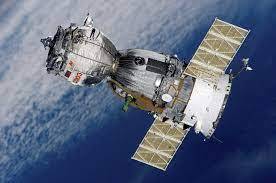
The convergence of Mobile Satellite Services (MSS), terrestrial networks, satellite technology, and the Internet of Things (IoT) heralds a new era of connectivity and innovation. By seamlessly integrating these components, we can overcome geographical barriers, bridge the digital divide, and unlock the full potential of a connected world. From enhancing emergency response capabilities to revolutionizing industries and improving everyday lives, the possibilities are limitless. As we continue to push the boundaries of technology, collaboration and innovation will remain paramount in shaping a future where connectivity knows no bounds.
0 notes
Text
The P-38 Lightning vs. Focke-Wulf Fw 190: Clash of Titans in World War II Skies
Introduction:
World War II witnessed a clash of titans in the skies, as iconic fighters such as the P-38 Lightning and the Focke-Wulf Fw 190 battled for supremacy. With powerful engines propelling them into combat, these formidable adversaries epitomized the technological prowess and strategic significance of aerial warfare. This narrative delves into the epic confrontation between these two legendary aircraft, exploring their design, capabilities, and pivotal roles in shaping the course of history.
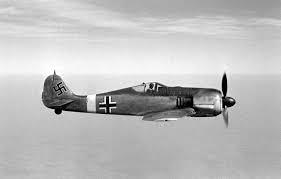
The P-38 Lightning: America's Twin-Engine Wonder
The P-38 Lightning emerged as a marvel of American engineering, boasting a revolutionary twin-engine design that set it apart from its contemporaries. Powered by two turbo-supercharged Allison V-1710 engines, each generating over 1,000 horsepower, the Lightning possessed unmatched speed, altitude performance, and versatility.
One of the most distinctive features of the P-38 was its twin-boom fuselage configuration, which provided exceptional stability and control, even at high speeds and altitudes. This design, coupled with a centralized cockpit and heavy armament, made the Lightning a formidable adversary in both air-to-air combat and ground attack missions.
In the hands of skilled pilots, the P-38 proved its mettle in theaters of war across the globe, from the deserts of North Africa to the skies over Europe and the Pacific. Whether engaging enemy fighters, escorting bombers, or conducting reconnaissance missions, this iconic aircraft played a pivotal role in securing air superiority for the Allied forces.
The Focke-Wulf Fw 190: Germany's Versatile Workhorse
In response to the Allied air threat, Germany unleashed the Focke-Wulf Fw 190, a versatile and deadly fighter designed to outclass its adversaries in speed, firepower, and maneuverability. Powered by the potent BMW 801 radial engine, the Fw 190 boasted impressive performance characteristics, including high speed, agility, and rate of climb.
The Fw 190's compact airframe and innovative design features, such as its sleek elliptical wings and streamlined fuselage, contributed to its exceptional aerodynamic efficiency and combat effectiveness. Armed with a formidable array of weaponry, including machine guns, cannons, and bombs, this German fighter struck fear into the hearts of Allied pilots.
In combat, the Fw 190 proved to be a formidable opponent, capable of outperforming and outmaneuvering Allied fighters with ease. Whether engaging in dogfights, intercepting bomber formations, or providing ground support, this iconic aircraft demonstrated remarkable versatility and adaptability on the battlefield.
Clash of Titans: The Battle for Air Superiority
The clash between the P-38 Lightning and the Focke-Wulf Fw 190 epitomized the intensity and ferocity of aerial combat during World War II. In countless engagements, these iconic fighters squared off against each other, each seeking to gain the upper hand in the struggle for air superiority.
The Lightning's superior speed, altitude performance, and heavy firepower made it a formidable opponent for the Fw 190, allowing American pilots to engage their German counterparts with confidence. However, the Fw 190's agility, firepower, and innovative design features posed a significant threat to the P-38, forcing Allied pilots to adapt their tactics and strategies accordingly.
Despite the formidable challenges posed by the Fw 190, the P-38 Lightning ultimately proved to be a decisive factor in securing victory for the Allied forces. Its versatility, firepower, and exceptional performance characteristics played a crucial role in turning the tide of the war in favor of the Allies, ensuring that the skies remained firmly under their control.
Legacy and Impact: Shaping the Future of Aviation
The legacies of the P-38 Lightning and the Focke-Wulf Fw 190 extend far beyond their wartime exploits, influencing the course of aviation history and shaping the future of aerial warfare. These iconic fighters served as testbeds for new technologies, tactics, and doctrines, paving the way for the development of modern-day warplanes.
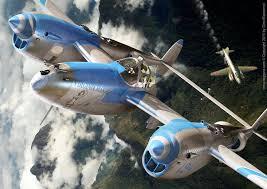
Moreover, the stories of bravery and heroism associated with these legendary aircraft continue to inspire generations of aviators and aviation enthusiasts, reminding us of the sacrifices made by those who flew and fought in defense of freedom and democracy. As we reflect on their remarkable journeys, let us honor the legacy of these iconic fighters and the courageous pilots who flew them into battle.
0 notes
Text
The Iconic Fighters: P-38 and Fw 190 – Powerhouses of the Sky
Introduction:
In the annals of aviation history, certain aircraft stand out as iconic symbols of power, innovation, and prowess. Among these, the P-38 Lightning and the Focke-Wulf Fw 190 fighters occupy a special place. These warbirds, powered by powerful engines, not only shaped the course of World War II but also left an indelible mark on the evolution of aerial combat. This discourse delves into the remarkable journey of these legendary fighters, exploring their design, performance, and enduring legacy.

The P-38 Lightning: A Marvel of Engineering Brilliance
The P-38 Lightning emerged as a marvel of engineering brilliance in the early 1940s, capturing the imagination with its distinctive twin-boom design and formidable firepower. Designed by Lockheed Corporation, this American fighter was propelled by two powerful engines, enabling it to reach unparalleled speeds and altitudes for its time.
At the heart of the P-38's superiority lay its revolutionary turbo-supercharged engines, which endowed it with exceptional climb rates and performance at high altitudes. Equipped with twin Allison V-1710 engines, each producing over 1,000 horsepower, the Lightning could soar to altitudes exceeding 40,000 feet, granting it a strategic advantage in combat scenarios.
Moreover, the P-38's unique design conferred upon it unparalleled stability and maneuverability, enabling pilots to execute intricate aerial maneuvers with precision and agility. Its twin-boom configuration, coupled with a centralized cockpit, facilitated excellent visibility and gunnery accuracy, essential attributes in dogfights against formidable adversaries.
In combat theaters across the globe, the P-38 distinguished itself as a versatile and formidable adversary, engaging enemy aircraft, conducting reconnaissance missions, and providing crucial escort for bomber formations. From the skies over Europe to the Pacific theater, this iconic fighter left an indelible mark on the course of World War II, earning the respect and admiration of both allies and adversaries alike.
The Focke-Wulf Fw 190: Germany's Masterstroke of Aeronautical Ingenuity
In response to the escalating demands of aerial warfare, German engineers conceived the Focke-Wulf Fw 190 as a masterstroke of aeronautical ingenuity, destined to rival the best Allied fighters of its time. Designed by Kurt Tank, this formidable adversary embodied the principles of speed, firepower, and maneuverability, setting new standards in aerial combat effectiveness.
Central to the Fw 190's prowess was its potent BMW 801 radial engine, a technological marvel renowned for its robustness and performance. With over 1,700 horsepower at its disposal, this powerhouse of an engine propelled the Fw 190 to impressive speeds and altitudes, giving German pilots a decisive edge in aerial engagements.
The Fw 190's design epitomized simplicity and effectiveness, featuring a streamlined fuselage, elliptical wings, and a compact airframe optimized for speed and agility. Armed with a formidable array of weaponry, including machine guns, cannons, and rockets, this German fighter struck fear into the hearts of its adversaries, earning a fearsome reputation on the battlefield.
In the crucible of combat, the Fw 190 proved its mettle time and again, engaging Allied aircraft with ferocity and determination. Whether intercepting bomber formations, engaging in dogfights, or providing ground support, this iconic fighter demonstrated unmatched versatility and combat effectiveness, earning the admiration of pilots and aviation enthusiasts worldwide.
Legacy and Impact: Shaping the Future of Aerial Warfare
The legacies of the P-38 Lightning and the Focke-Wulf Fw 190 extend far beyond their wartime exploits, influencing the course of aviation history and shaping the future of aerial warfare. These iconic fighters not only demonstrated the importance of powerful engines in achieving air superiority but also showcased the significance of innovation, adaptability, and strategic thinking in the evolution of combat aircraft.
The technological advancements pioneered by these legendary fighters paved the way for future generations of aircraft, inspiring designers and engineers to push the boundaries of aeronautical engineering. From supersonic jets to stealth fighters, their influence can be seen in the design principles and performance metrics of modern-day warplanes, testament to their enduring legacy.
Moreover, the stories of bravery and heroism associated with these iconic fighters continue to resonate with aviation enthusiasts and historians, serving as a reminder of the sacrifices made by those who served in the defense of freedom and democracy. Whether soaring through the skies in pursuit of victory or defending against overwhelming odds, the pilots who flew these legendary aircraft exemplified the highest ideals of courage, skill, and determination.

In the annals of aviation history, the P-38 Lightning and the Focke-Wulf Fw 190 fighters stand as enduring symbols of innovation, excellence, and courage. Powered by powerful engines and piloted by fearless aviators, these iconic warbirds left an indelible mark on the course of World War II, shaping the future of aerial warfare and inspiring generations of aviation enthusiasts. As we reflect on their remarkable journeys, let us honor the legacy of those who flew and fought in defense of freedom, ensuring that their sacrifices are never forgotten.
0 notes
Text
Rising Above: Dubai Floods and the Fortitude of Dubai International Airport
Introduction
Dubai, often portrayed as a shimmering oasis in the desert, faces its own set of challenges, including the occasional threat of flooding. Despite its reputation for opulence and modernity, the emirate is not immune to the forces of nature. In recent years, Dubai has experienced sporadic but significant floods, testing the resilience of its infrastructure and communities. Among the critical lifelines in this bustling metropolis is the Dubai International Airport, a bustling hub that connects the city to the world. This article explores the intersection of Dubai flood events and the resilience demonstrated by the Dubai International Airport in the face of such challenges.

Understanding Dubai Floods
Dubai's geographical location, nestled within a desert landscape, typically ensures arid conditions punctuated by minimal rainfall. However, when precipitation does occur, it can be intense and erratic, leading to localized flooding. The rapid urbanization and extensive development in Dubai have transformed vast expanses of natural terrain into impermeable surfaces, exacerbating runoff and overwhelming drainage systems. Consequently, flash floods are not uncommon in low-lying areas, disrupting daily life and posing significant challenges to infrastructure resilience.
Dubai Flood News Today
In recent years, Dubai's vulnerability to flooding has been thrust into the spotlight, with news outlets worldwide reporting on notable flood events. From sudden downpours to intense thunderstorms, these incidents have underscored the need for effective flood management strategies and adaptive responses. Dubai flood news today often features stories of emergency responders braving the elements to assist stranded motorists, residents banding together to clear waterlogged streets, and authorities implementing measures to mitigate the impact of flooding on critical infrastructure such as roads, bridges, and airports.
Impact on Dubai International Airport
As one of the busiest airports in the world, Dubai International Airport plays a pivotal role in the city's economy and connectivity. However, like any major infrastructure asset, it is susceptible to the effects of flooding. Inundation of runways, taxiways, and terminal buildings can disrupt flight schedules, delay cargo shipments, and inconvenience passengers. Moreover, waterlogged facilities pose safety risks and logistical challenges for airport operations, requiring swift and effective responses to minimize disruptions and ensure the safety of travelers and personnel.
Resilience of Dubai International Airport
Despite the inherent risks posed by flooding, Dubai International Airport has demonstrated remarkable resilience in the face of adversity. The airport's infrastructure is designed and built to withstand a range of weather-related hazards, including floods. Robust drainage systems, flood barriers, and emergency response protocols are integral components of the airport's resilience strategy, enabling it to adapt and respond effectively to changing conditions. Moreover, investments in advanced technologies, such as real-time flood monitoring sensors and predictive analytics, enhance the airport's ability to anticipate and mitigate flood risks.
Investment in Infrastructure
Recognizing the importance of resilience in safeguarding critical infrastructure, Dubai has made significant investments in infrastructure upgrades and resilience measures. At Dubai International Airport, these investments include the expansion of stormwater management systems, the installation of flood-resistant materials in terminal buildings, and the elevation of critical infrastructure to reduce the risk of inundation. Moreover, green infrastructure solutions, such as rain gardens and permeable pavements, are being incorporated into airport design and development projects to enhance resilience while promoting sustainability.
Collaborative Approach
Addressing the complex challenges posed by flooding requires a collaborative and multi-disciplinary approach involving government agencies, private sector stakeholders, academia, and the community. In Dubai, partnerships between public and private entities have been instrumental in developing innovative solutions for flood management and resilience building. Through joint initiatives, knowledge sharing, and capacity-building programs, stakeholders are working together to enhance the city's adaptive capacity and resilience to floods.
Community Engagement and Awareness
Central to Dubai's resilience strategy is community engagement and awareness-raising efforts aimed at empowering residents to take proactive measures to reduce flood risks. Public awareness campaigns, community-based flood preparedness programs, and educational initiatives are helping to foster a culture of resilience and preparedness among residents. By encouraging individuals to become active participants in flood management efforts, Dubai aims to build a more resilient and adaptive society capable of weathering future flood events effectively.
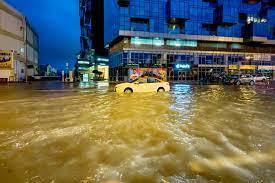
Dubai's journey towards resilience in the face of floods is an ongoing process that requires commitment, innovation, and collaboration. As climate change continues to exacerbate the frequency and intensity of extreme weather events, the need for proactive and adaptive approaches to flood management becomes increasingly urgent. Through strategic investments in infrastructure, robust contingency planning, and community engagement, Dubai is charting a course towards a more resilient and sustainable future. By leveraging its strengths, embracing innovation, and fostering collaboration, Dubai can navigate the challenges of flooding with confidence, ensuring the safety, prosperity, and well-being of its residents and visitors alike.
0 notes
Text
Navigating the Deluge: Dubai Floods and the Resilience of Dubai International Airport
Introduction
Dubai, known for its towering skyscrapers, luxurious lifestyle, and relentless pursuit of innovation, often finds itself in the global spotlight. However, amidst the glitz and glamour, the emirate faces its own set of challenges, including the occasional threat of flooding. In recent years, Dubai has experienced sporadic but significant floods, disrupting normalcy and posing unique challenges to its infrastructure. Among the critical nodes in this bustling metropolis is the Dubai International Airport, a vital hub connecting the world. This article delves into the intersection of Dubai flood events and the resilience demonstrated by the Dubai International Airport in the face of such challenges.
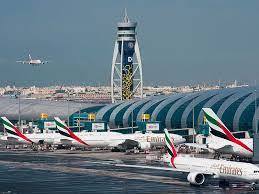
Understanding Dubai Floods
Dubai, situated in a desert climate, typically experiences arid conditions with minimal rainfall. However, when rains do occur, they can be intense, leading to localized flooding due to the city's rapid urbanization and limited natural drainage systems. The geography of Dubai, characterized by vast expanses of impermeable surfaces such as concrete and asphalt, exacerbates the runoff, overwhelming drainage infrastructure and leading to flash floods in low-lying areas.
Dubai Flood News Today
In recent years, Dubai has witnessed several notable flood events, making headlines worldwide. From unexpected downpours to intense thunderstorms, these incidents have underscored the vulnerability of the city's infrastructure to extreme weather events. Dubai flood news today often highlights the efforts of emergency services, municipal authorities, and residents in managing the aftermath of such events, emphasizing the importance of preparedness and adaptive strategies in mitigating flood risks.
Impact on Dubai International Airport
One of the critical lifelines of Dubai is its international airport, serving as a gateway for millions of passengers and tons of cargo each year. However, the airport is not immune to the effects of flooding, which can disrupt operations, delay flights, and cause inconvenience to travelers. The inundation of runways, taxiways, and terminal buildings poses significant safety concerns and logistical challenges for airport authorities, requiring swift action and robust contingency plans to minimize disruptions.
Resilience of Dubai International Airport
Despite the occasional onslaught of floods, Dubai International Airport has demonstrated remarkable resilience in maintaining its operations and minimizing the impact on travelers. The airport's infrastructure is designed to withstand adverse weather conditions, with advanced drainage systems, flood barriers, and emergency response protocols in place. Moreover, continuous monitoring of weather patterns allows airport authorities to anticipate potential risks and implement preventive measures proactively.
Investment in Infrastructure
Recognizing the importance of resilience in the face of climate-related risks, Dubai has made significant investments in infrastructure upgrades to enhance its capacity to withstand floods. From retrofitting existing buildings to incorporating green infrastructure solutions, the city is taking proactive steps to future-proof its assets against the impacts of climate change. At Dubai International Airport, these investments include the expansion of stormwater management systems, the installation of flood monitoring sensors, and the construction of elevated runways to minimize the risk of inundation.
Collaborative Approach
Addressing the challenges posed by floods requires a collaborative approach involving government agencies, private sector stakeholders, academia, and the community at large. In Dubai, partnerships between public and private entities have been instrumental in developing innovative solutions for flood management and building resilience. Through knowledge sharing, capacity building, and joint initiatives, stakeholders are working together to create a more resilient and sustainable urban environment.
Community Engagement and Awareness
Central to Dubai's resilience strategy is community engagement and awareness-raising efforts aimed at empowering residents to take proactive measures to reduce flood risks. From public awareness campaigns to community-based flood preparedness programs, efforts are underway to educate and inform the public about the importance of resilience and the role individuals can play in safeguarding their communities. By fostering a culture of preparedness and resilience, Dubai aims to enhance its adaptive capacity to cope with future flood events effectively.

Dubai's journey towards resilience in the face of floods is a testament to the city's ability to adapt and innovate in response to evolving challenges. As climate change continues to amplify the frequency and intensity of extreme weather events, the need for proactive and collaborative approaches to flood management becomes ever more crucial. Through strategic investments in infrastructure, robust contingency planning, and community engagement, Dubai is charting a course towards a more resilient and sustainable future, where floods are no longer a threat but an opportunity for growth and resilience-building.
0 notes
Text
Goa Shipyard Limited's Contribution to Maritime Security: The Evolution of Patrol Vessels for the Indian Navy
Introduction:
In the realm of maritime security, the role of patrol vessels cannot be overstated. Goa Shipyard Limited (GSL), a cornerstone of India's maritime industry, has been instrumental in the design and construction of advanced patrol vessels tailored to the specific needs of the Indian Navy. This article delves into GSL's contributions to enhancing maritime security through the development of patrol vessels equipped with state-of-the-art sensors and communication systems.
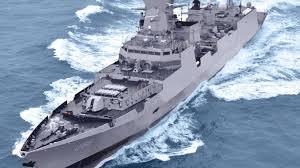
The Evolution of Patrol Vessels:
Patrol vessels have undergone significant evolution over the years, adapting to emerging threats and technological advancements. From humble beginnings as coastal patrol craft to sophisticated multi-role platforms, these vessels have become indispensable assets for safeguarding maritime interests. GSL has been at the forefront of this evolution, leveraging its expertise in shipbuilding and naval engineering to deliver cutting-edge patrol vessels equipped with advanced capabilities.
GSL's Expertise and Infrastructure:
GSL's journey from a modest ship repair facility to a leading shipbuilder is a testament to India's maritime aspirations. With state-of-the-art infrastructure and a skilled workforce, GSL possesses the capability to design, construct, and commission a diverse range of naval vessels. Its strategic location in Goa, overlooking the Arabian Sea, provides an ideal environment for testing and sea trials, ensuring the reliability and seaworthiness of its vessels.
Integration of Advanced Sensors and Communication Systems:
The effectiveness of patrol vessels hinges on their ability to gather timely and accurate information, detect potential threats, and communicate seamlessly with command centers and allied forces. GSL's patrol vessels are equipped with advanced sensors, including radar, sonar, and electro-optical systems, which enable comprehensive situational awareness in all maritime environments. These sensors are complemented by robust communication systems, facilitating secure data exchange and real-time decision-making.
Collaboration with the Indian Navy:
GSL's partnership with the Indian Navy is built on a shared commitment to maritime security and national defense. Through close collaboration and dialogue, GSL works in tandem with the Indian Navy to understand its operational requirements and translate them into tangible vessel designs. This collaborative approach ensures that GSL's patrol vessels are optimized for Indian Navy's missions, whether it be coastal patrolling, anti-piracy operations, or humanitarian assistance and disaster relief (HADR) missions.
Customization and Flexibility in Design:
One of GSL's key strengths lies in its ability to customize patrol vessels to meet the specific needs of its customers. Each vessel is meticulously designed and tailored to address the unique challenges faced by the Indian Navy, taking into account factors such as operational environment, mission profile, and budgetary constraints. This flexibility in design allows GSL to deliver bespoke solutions that align with the Indian Navy's strategic objectives and operational doctrine.
Technological Innovations Driving GSL's Patrol Vessels:
GSL continually invests in research and development to integrate the latest technological innovations into its patrol vessels. From advanced propulsion systems to enhanced stealth features, every aspect of vessel design is subject to rigorous scrutiny and refinement. Emerging technologies such as unmanned surface vessels (USVs) and autonomous underwater vehicles (AUVs) are also being explored to augment the capabilities of GSL's patrol vessels, paving the way for unmanned and autonomous operations in the future.
Operational Effectiveness and Mission Success:
The deployment of GSL's patrol vessels has significantly enhanced the Indian Navy's operational effectiveness and mission success rate. These vessels serve as force multipliers, extending the reach of the Indian Navy and enabling it to maintain constant vigilance over vast maritime domains. Whether conducting routine patrols, intercepting suspicious vessels, or responding to maritime emergencies, GSL's patrol vessels play a pivotal role in safeguarding India's maritime interests and upholding maritime security in the region.

In conclusion, Goa Shipyard Limited stands as a beacon of excellence in the domain of naval shipbuilding, particularly in the construction of advanced patrol vessels for the Indian Navy. By integrating advanced sensors and communication systems, customizing designs to meet specific requirements, and fostering close collaboration with the Indian Navy, GSL has emerged as a trusted partner in enhancing maritime security and defense capabilities. As the maritime landscape continues to evolve, GSL remains committed to pushing the boundaries of innovation and delivering solutions that meet the evolving needs of its customers.
0 notes
Text
Goa Shipyard Limited: A Key Player in Supplying Advanced Patrol Vessels to the Indian Navy
Introduction:
Goa Shipyard Limited (GSL) stands as a testament to India's maritime prowess, specializing in the construction and maintenance of vessels for various purposes. Among its notable contributions are the advanced patrol vessels equipped with cutting-edge sensors and communication systems, tailored to meet the demanding requirements of the Indian Navy. This article explores GSL's role in bolstering the naval capabilities of India through the provision of state-of-the-art patrol vessels.

History and Expertise of Goa Shipyard Limited:
Established in 1957, Goa Shipyard Limited has evolved into a premier shipbuilding facility in India. Initially tasked with repairing and overhauling vessels, GSL gradually expanded its capabilities to include the construction of diverse naval vessels. Over the decades, GSL has garnered a reputation for excellence, driven by a commitment to innovation and quality craftsmanship. Its expertise encompasses the design, fabrication, and integration of sophisticated maritime platforms, ranging from patrol boats to offshore patrol vessels.
The Significance of Patrol Vessels:
Patrol vessels serve as the backbone of maritime security, patrolling territorial waters, conducting surveillance missions, and safeguarding maritime interests. In an era marked by evolving security threats and geopolitical challenges, the role of patrol vessels has become increasingly vital. Equipped with advanced sensors and communication systems, these vessels offer enhanced situational awareness and rapid response capabilities, crucial for maintaining maritime sovereignty and combating maritime threats.
Integration of Advanced Sensors and Communication Systems:
One of the distinguishing features of GSL's patrol vessels is the integration of advanced sensors and communication systems. These systems enable real-time data collection, processing, and dissemination, empowering naval operators with actionable intelligence. Cutting-edge radar systems, electro-optical sensors, and surveillance suites enhance the vessel's detection capabilities, enabling it to identify and track potential threats across vast maritime domains. Furthermore, robust communication systems facilitate seamless coordination with naval command centers, allied forces, and maritime stakeholders, ensuring effective mission execution and response coordination.
Collaboration with the Indian Navy:
GSL's partnership with the Indian Navy is founded on mutual trust, collaboration, and a shared commitment to national security. As a strategic partner, GSL works closely with the Indian Navy to understand its operational requirements and technological aspirations. This collaborative approach facilitates the co-development of patrol vessels tailored to meet the specific needs and challenges encountered by the Indian Navy. By leveraging the expertise of both entities, GSL delivers innovative solutions that enhance the Indian Navy's maritime capabilities and operational effectiveness.
Technological Advancements in GSL's Patrol Vessels:
GSL's patrol vessels represent the pinnacle of technological innovation in maritime engineering. Through continuous research and development efforts, GSL integrates the latest advancements in hull design, propulsion systems, and onboard systems to optimize performance and reliability. Advanced composite materials enhance structural integrity while reducing weight, resulting in improved fuel efficiency and maneuverability. Moreover, the adoption of stealth technology minimizes the vessel's radar cross-section, enhancing its stealth capabilities and survivability in hostile environments.
Operational Versatility and Mission Flexibility:
GSL's patrol vessels are designed for versatility, capable of undertaking a wide range of maritime missions with precision and efficiency. Whether conducting coastal patrols, anti-piracy operations, search and rescue missions, or maritime law enforcement, these vessels excel in diverse operational environments. Modular design features allow for mission-specific customization, enabling the integration of specialized equipment and weapon systems as per operational requirements. This adaptability ensures that GSL's patrol vessels remain at the forefront of maritime security, ready to address emerging threats and challenges.
Impact on Maritime Security and National Defense:
The deployment of GSL's advanced patrol vessels has had a transformative impact on India's maritime security landscape and national defense posture. By enhancing maritime domain awareness, deterring illicit activities, and safeguarding critical maritime infrastructure, these vessels contribute significantly to maintaining peace and stability in the region. Moreover, their interoperability with other naval assets strengthens the Indian Navy's ability to conduct joint and coordinated operations, thereby enhancing overall operational effectiveness and force projection capabilities.
Future Prospects and Innovation:
As India's maritime ambitions continue to evolve, GSL remains committed to driving innovation and pushing the boundaries of naval technology. Future patrol vessel programs will likely focus on integrating autonomous systems, unmanned aerial vehicles (UAVs), and artificial intelligence (AI) capabilities to further enhance operational efficiency and effectiveness. Additionally, GSL will continue to prioritize sustainability and environmental stewardship, exploring eco-friendly propulsion technologies and green manufacturing practices to minimize the ecological footprint of its vessels.

In conclusion, Goa Shipyard Limited plays a pivotal role in strengthening India's maritime security and defense capabilities through the provision of advanced patrol vessels to the Indian Navy. Equipped with state-of-the-art sensors and communication systems, these vessels embody the spirit of innovation and excellence, enabling the Indian Navy to safeguard its maritime interests with confidence and resolve. Looking ahead, GSL remains committed to fostering collaboration, driving technological innovation, and contributing to India's maritime prowess on the global stage.
1 note
·
View note